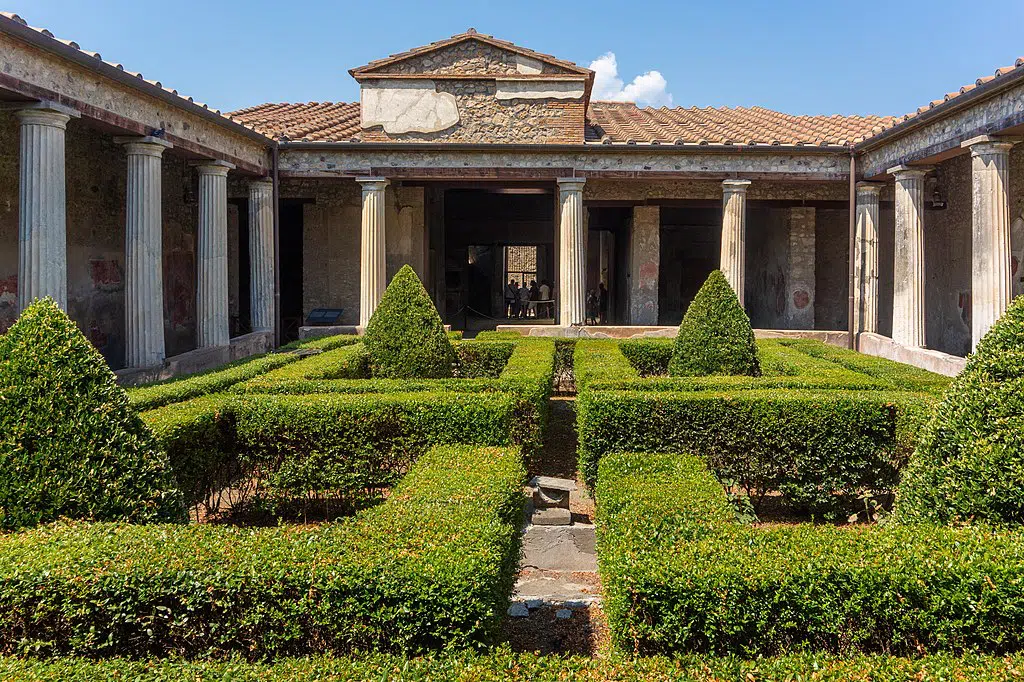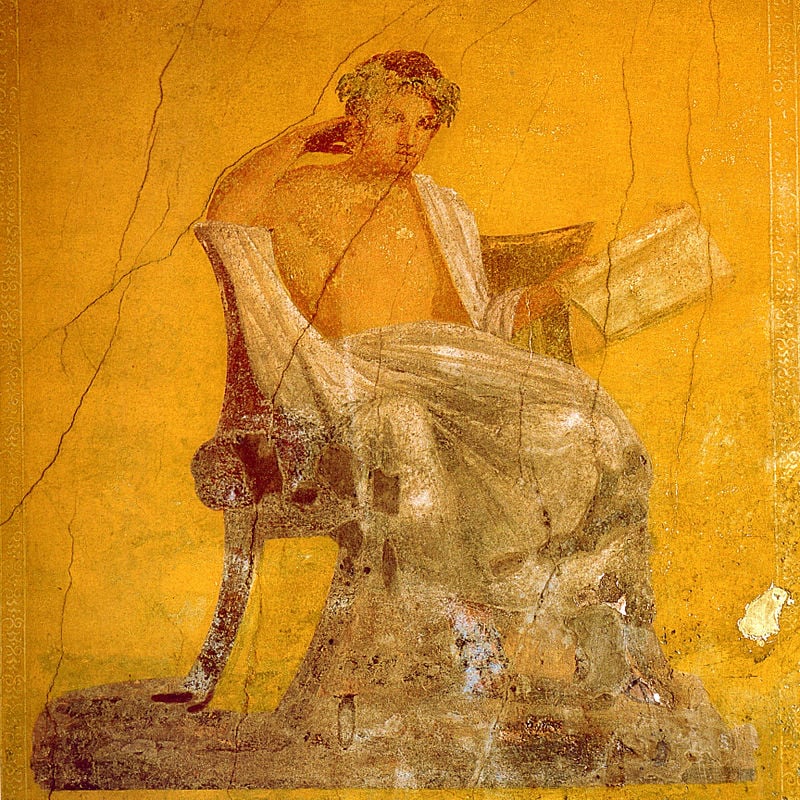
The House of Menander is one of the most spectacular of all of the many historical treasures of Pompeii. Owing its name to the Ancient Greek comedic playwright, it is one of the many splendid structures in the city by the sea that is renowned for the lavish lifestyle its residents enjoyed before the cataclysmic eruption of the nearby volcano Vesuvius in 79 AD.
And its name appears to be in line with the pleasure-loving ways of the Pompeiians before the destruction of their city. A fresco on its walls in nearly perfect condition despite the devastation of the volcano and the passing of almost two thousand years purportedly shows the playwright reading from one of his comedic works.
With construction starting in the year 250 BC, the house was already quite old at the time of the eruption in the first century AD. Uninhabited at the time of the cataclysm, archaeologists say that it appears to have been undergoing renovations when the volcano exploded, ending life as it had been known in the city.
Not only that, but the remains of bodies found within it may have been those of looters, as seen by the lanterns and pickaxes that they had with them. There had been earthquakes reported in the months and weeks prior to the explosion, as notably recorded by the historian Pliny the Younger.
Perhaps as a result of one of these temblors, the looters made their move, thinking that they would get to the frescoes and the chests inside that contained treasures that had been packed away during the renovations.
The eruption of Mt. Vesuvius, which emitted a hundred thousand times the thermal energy of the atomic bombings of Hiroshima and Nagasaki, brought a swift end to this endeavor, entombing them, and their pickaxes, inside the villa forever.

Incredibly, however, much of the House of Menander survives, making it one of the richest and most magnificent houses in ancient Pompeii in terms of its architecture, decoration, and contents.
It also is extraordinarily large at approximately 1,800 square meters (19,000 square feet). No one knows for certain who its owner might have been, but judging from its great size and ostentation, it must have been a local aristocrat or politician—and one with a discerning eye for art.
And perhaps a man who enjoyed his comedies.
The house was first excavated between November 1926 and June 1932; archaeologists found that its oldest part, constructed in 250 BC, had a modestly-sized atrium with surrounding rooms.

The house was modernized approximately a hundred years after it was built; capitals made of easily-carved volcanic tuff were used for the entrance door and the tablinum.
Shortly before the eruption, further modernization works were carried out in various places in the house, as shown by amphorae that archaeologists found filled with stucco along with a temporary oven.
Indeed, the absence of everyday objects such as those connected with food, the presence of building materials, and the latest coin found there dating to AD 37, imply that the House of Menander was unoccupied at the time of the eruption.
A total of eight victims of the eruption, believed to have been the looters, were found in the house; two men and a woman in room 19, ten more in the corridor, and two in room 43 (one on a bed). There were three more people found in a courtyard, along with a skeleton of a dog.
Historians believe that it is possible that the owner of the House of Menander at the time of Vesuvius’ eruption in 79 AD was a wealthy tourist—not a local personage.
The striking fresco of the ancient Greek dramatist Menander in a small room off the peristyle still stuns visitors today with its glowing yellow pigments and representation of the writer. Some believe that the painting is not actually of Menander but rather of the owner of the house, or another person reading works by Menander, a common practice in these times.
The house included other ancient Greek-related frescoes as well, including one depicting the death of Laocoön.
Other Greek details of the House include large columns in the peristyle which are representative of the Doric style of architecture, an offshoot of the Classical style.
Romans borrowed liberally from all the Greek arts in creating their architecture, of course, so the emphasis on Greek culture in Pompeiian architecture is not surprising. In addition, Greek sailors had been using the port as a trading post even before the Oscans founded the city in the 6th century BC.
In a corridor next to the small atrium of the private baths, a treasure trove of 118 silver vases was found which had been carefully wrapped in cloths and placed in a tall wooden cabinet during the renovation of the house.
Menander, who lived from approximately 342 to 290 BC, was a Greek dramatist, who was the best-known representative of Athenian New Comedy. He wrote a total of 108 comedies, taking the prize at the Lenaia festival eight times.
He was one of the most popular writers in antiquity, but his work was lost during the Middle Ages and is now known in highly fragmentary form, much of which was discovered only in the twentieth century.
Only one play, Dyskolos, has survived almost complete. A number of supposed busts of Menander survive, including a well-known statue in the Vatican, which was formerly thought to represent Gaius Marius.
An admirer and imitator of Euripides, Menander resembles him in his keen observation of practical life, his analysis of emotions, and his fondness for moral maxims, many of which became proverbial: “The property of friends is common,” “Whom the gods love die young,” “Evil communications corrupt good manners” (from the Thaïs, quoted in the Bible in 1 Corinthians 15:33).
These beloved maxims were collected centuries later, and, with additions from other sources, were edited as “Menander’s One-Verse Maxims,” a type of moral primer for students.
Menander had many Roman imitators, and, as we can see in the House of Menander, admirers.
In 2003, a palimpsest manuscript, in Syriac writing of the 9th century, was found where the reused parchment comes from a very expensive 4th-century Greek manuscript of works by Menander. The surviving leaves contain parts of the Dyskolos and two hundred lines of another, as yet unidentified, work by Menander.
After the playwright’s death, his countrymen honored him with a tomb on the road leading to Athens, where it was seen and recorded by Pausanias, the cultural geographer of Greece.
See all the latest news from Greece and the world at Greekreporter.com. Contact our newsroom to report an update or send your story, photos and videos. Follow GR on Google News and subscribe here to our daily email!



